Doghole Port: Stewarts Point
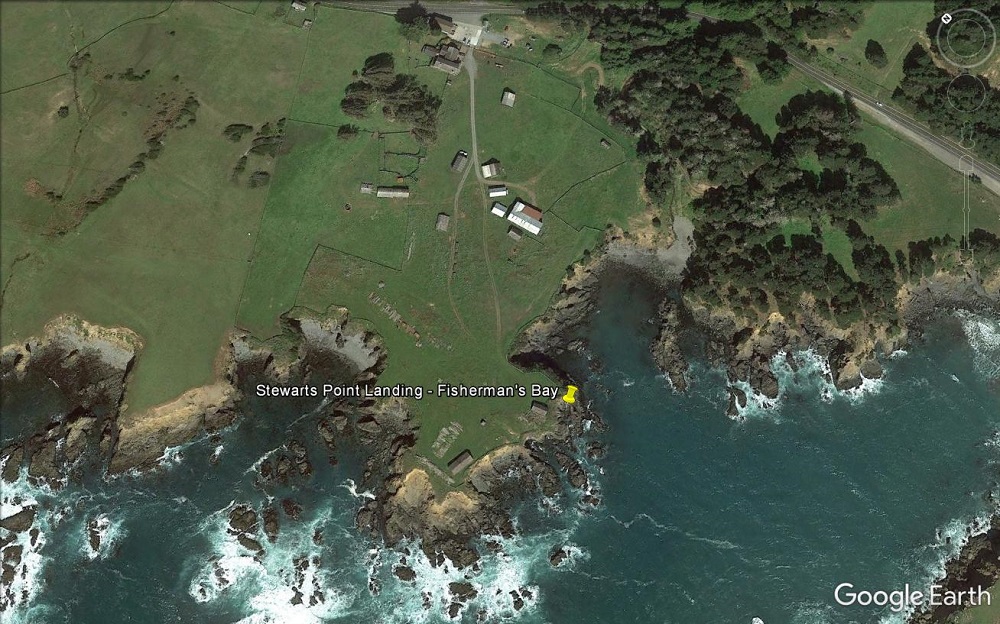
Stewarts Point and the adjacent Fisherman Bay have a long and important history to the indigenous Pomo people who have lived in the area for millennia. The large sheltered cove fed by a small creek offered access to the area’s bountiful marine and coastal resources. The topographic advantages of this location were equally recognized by Euro-American settlers who set out from San Francisco to take advantage of the coastal redwood forest. John and Andrew Fisk built the first landing at Stewarts Point in 1867. By 1877, three lumber chutes shipped out products from nearby mills. Herbert Archer (H. A.) Richardson bought the property in 1881and used the middle chute, the only operational one by that time, until he built his own. Richardson’s lumbering activities were a family venture that continued on for 40 years until trucks replaced water shipment in 1925.
Stewarts Point Landing developed into a small community with 30 buildings including a store, hotel, post office, and blacksmith shop. Several mill operations nearby supplied posts, railroad ties, tan bark, fencing, cordwood, and shingles for export out through the doghole port. Additionally, farm and dairy products also made their way to San Francisco via the lumber ships. As chute technology progressed, the slide chute was replaced by a wire chute, which was much simpler to use and faster to load with. To supply the chutes, mill operators installed a system of steam and horse drawn railroads to move the forest products to the cliff edge. The Richardson’s even owned their own fleet of schooners and steam schooners to better control the flow of goods.
Stewarts Point is private property today, but Stewarts Point Store, on Route 1 provides a scenic view of the doghole port. The cultural landscape contains a combination of lumber and ranch features all emblematic of the redwood coasts’ diverse heritage. The 2016 Doghole Ports Survey team was able to document Stewarts Point and talk with Harold Richardson (1919-2016), grandson of H.A., lifelong timberman, and resident of Stewarts Point. This remarkable opportunity provided an unforgettable human element to the story, one that the project team will carry on through the interpretation of the Sonoma Coast doghole ports.
-- Deborah Marx, Maritime Archaeologist, Maritime Heritage Program, Office of National Marine Sanctuaries

An unknown schooner anchored in Fisherman’s Bay.
Credit: San Francisco Maritime National Park E06.531n (SAFR 21374)

The U.S. Coast and Geodetic Survey T-sheet from 1878 depicts three lumber chutes at Stewarts Point.
Credit: NOAA’s Historical Map & Chart Collection
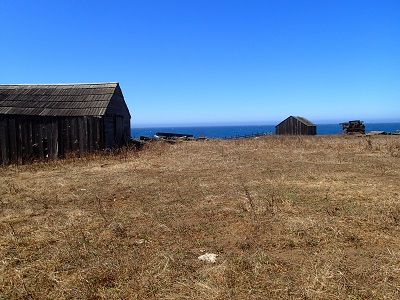
Stewarts Point’s maritime cultural landscape includes remains from the lumber and ranch operations.
Credit: NOAA ONMS and California State Parks
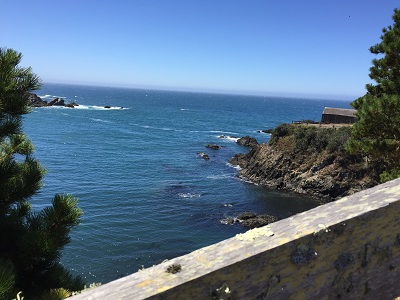
View today from nearly the same vantage point as the historic photo.
Credit: NOAA ONMS and California State Parks

Wooden timbers and iron rails from the wire chute winch platform.
Credit: NOAA ONMS and California State Parks
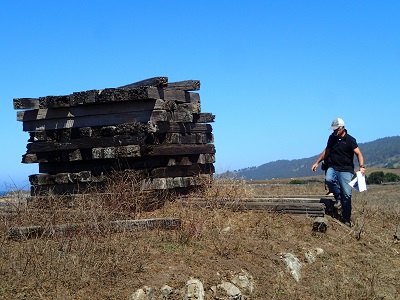
Stacked railroad ties that were likely part of the horse-drawn railroad that hauled lumber to the chutes.
Credit: NOAA ONMS and California State Parks
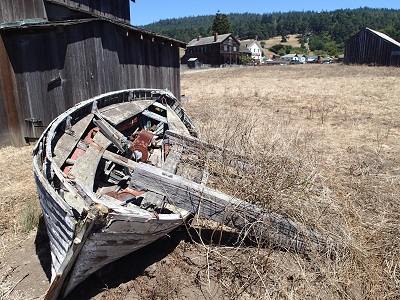
This wooden motorized lifeboat was one of two small boats found at Stewarts Landing. Both could have been raised and lowered to the water with the wire chute.
Credit: NOAA ONMS and California State Parks
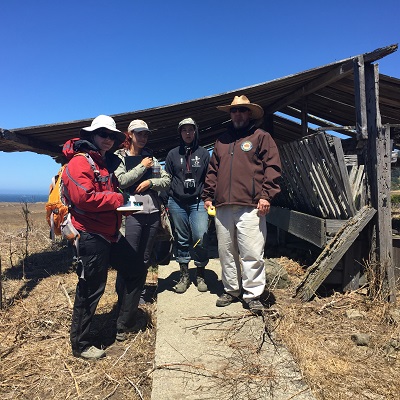
California State Parks archaeologists recording a livestock feeder. As the lumber industry declined, Stewarts Point turned to ranching.
Credit: NOAA ONMS and California State Parks
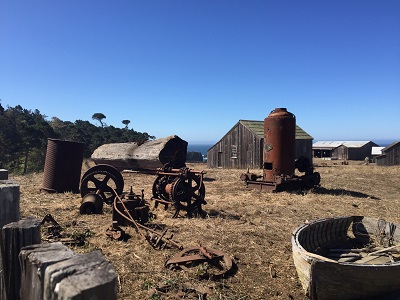
A display of Stewarts Point relics can be seen from The Stewarts Point Store.
Credit: NOAA ONMS and California State Parks

